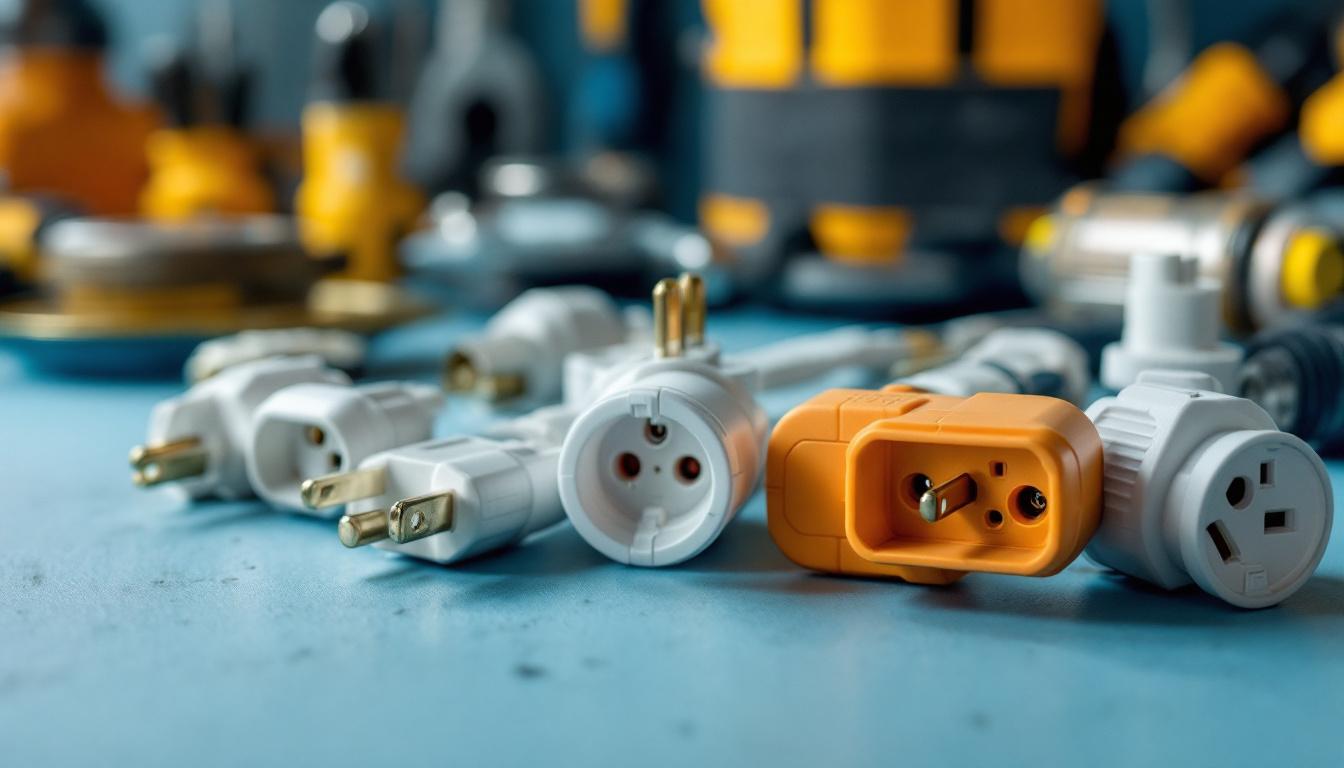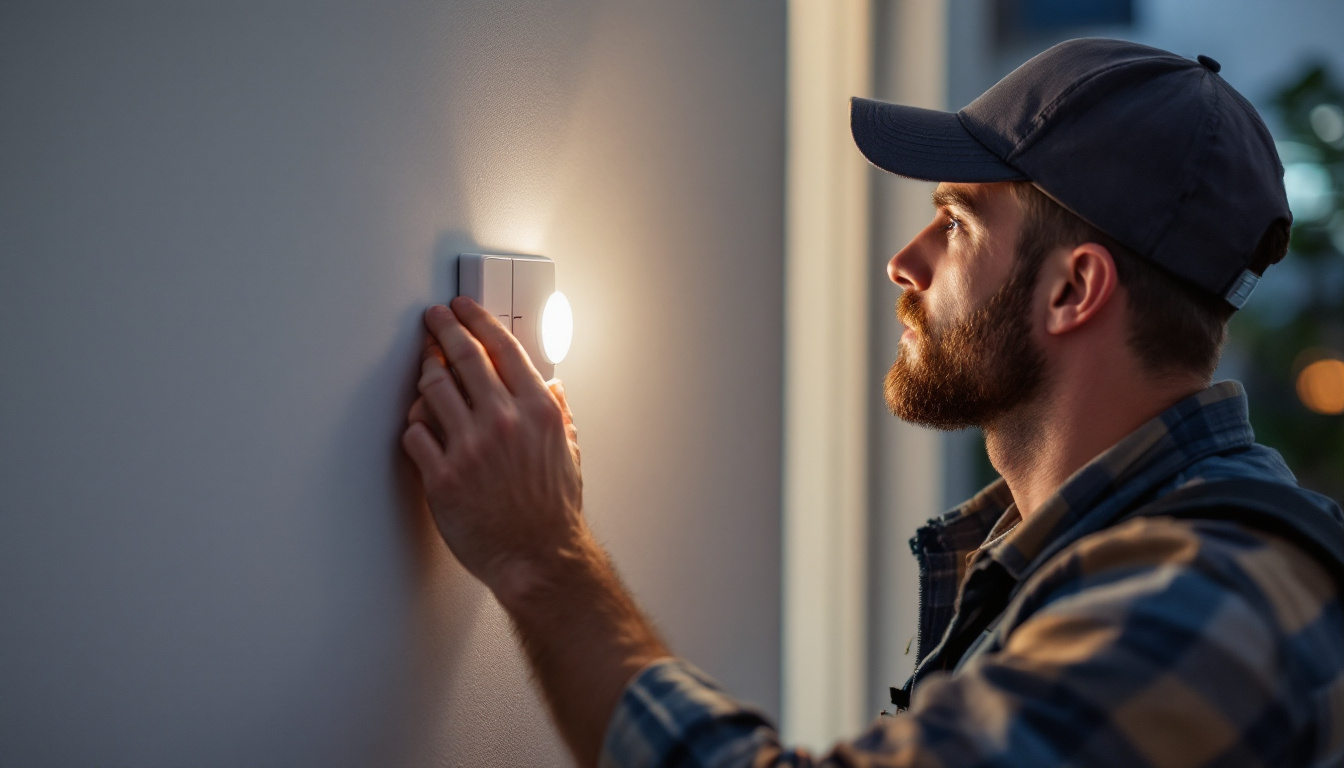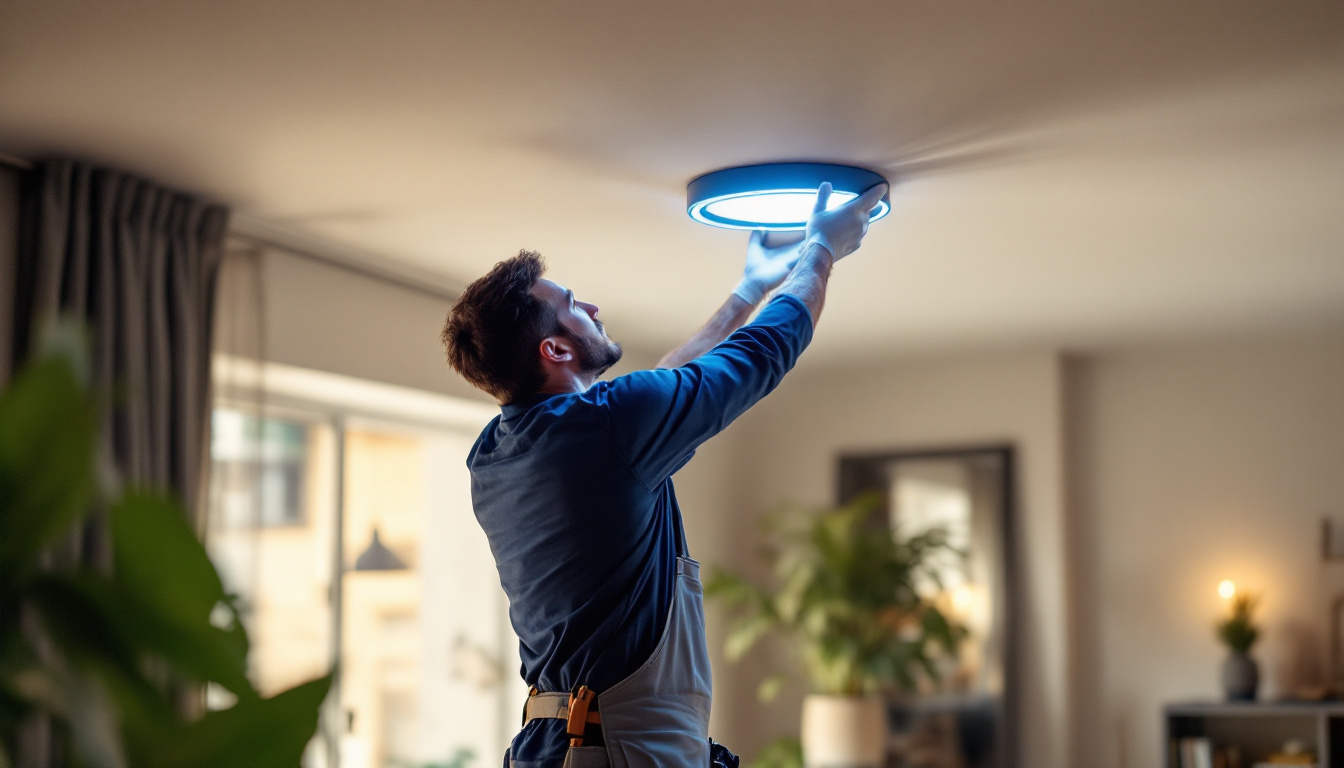
In the realm of electrical installations, understanding the various types of dryer plugs is crucial for lighting contractors. These plugs are not just simple connectors; they play a significant role in ensuring safety and efficiency in electrical systems. The different types of dryer plugs are designed for specific voltage and amperage requirements, which can directly affect the performance of lighting systems and other electrical appliances.
For lighting contractors, familiarity with dryer plugs can enhance their ability to troubleshoot electrical issues, recommend appropriate equipment, and ensure compliance with local codes. This knowledge becomes even more relevant when working on projects that involve multi-functional spaces, where both lighting and laundry facilities may coexist. Moreover, understanding the nuances of these plugs can aid in optimizing energy consumption, which is increasingly important in today’s eco-conscious environment.
Dryer plugs typically fall into three main categories: 3-prong, 4-prong, and the less common 5-prong plugs. Each type serves a distinct purpose and is suited to different electrical configurations. Understanding these variations is essential for lighting contractors who may encounter them during installations or renovations. Additionally, knowing the specific requirements for each plug type can help contractors avoid costly mistakes and ensure that installations are both efficient and compliant with the latest safety standards.
The 3-prong dryer plug is one of the oldest designs and is still prevalent in many homes. This plug features two hot wires and a neutral wire, allowing for a 240-volt connection. While the simplicity of the 3-prong design makes it easy to use, it lacks a dedicated ground wire, which can pose safety risks. In older homes, where this plug is still in use, it is essential for contractors to assess the overall electrical system to ensure that it meets current safety regulations.
For lighting contractors, working with 3-prong plugs may require additional considerations. Ensuring that the electrical system is grounded properly is paramount, as this can prevent electrical shocks and enhance the overall safety of the installation. Furthermore, understanding the limitations of this plug type can guide contractors in recommending upgrades to clients, thereby improving the safety and functionality of their electrical systems. This is particularly important in residential settings where families may be at risk due to outdated wiring practices.
The 4-prong dryer plug is the modern standard and has largely replaced the 3-prong version in new constructions. This design includes two hot wires, a neutral wire, and a dedicated ground wire. The inclusion of a ground wire significantly improves safety by providing a path for fault currents, thereby reducing the risk of electrical fires. As a result, the 4-prong plug has become the preferred choice for new dryer installations, reflecting advancements in electrical safety standards.
Lighting contractors should be aware that when upgrading or installing new electrical systems, the 4-prong configuration is often required by building codes. This knowledge not only ensures compliance but also enhances the safety and reliability of the overall electrical system. Additionally, contractors should educate clients on the benefits of using 4-prong plugs, such as improved energy efficiency and reduced risk of electrical hazards. By doing so, they can foster a better understanding of the importance of modern electrical standards and encourage proactive upgrades in older homes, ultimately contributing to a safer living environment for all. Furthermore, as energy efficiency becomes a growing concern, the ability to explain the advantages of newer plug types can position contractors as trusted advisors in their field.
Choosing the right dryer plug is not merely a matter of convenience; it has significant implications for safety and functionality. For lighting contractors, understanding the nuances of plug selection can lead to better project outcomes and client satisfaction.
One of the primary reasons for selecting the appropriate dryer plug type is safety. Using a plug that is incompatible with the electrical system can lead to overheating, electrical shorts, or even fires. Lighting contractors must ensure that the plugs they work with are rated for the specific voltage and amperage of the appliances they are connecting.
Moreover, the grounding feature in 4-prong plugs provides an additional layer of safety that is often lacking in older 3-prong systems. This is particularly important in environments where moisture is present, such as laundry rooms or basements, where the risk of electrical shock is heightened. Additionally, proper plug selection can also help prevent damage to the appliance itself. Appliances that are not connected to the correct power supply may experience reduced efficiency or even permanent damage, leading to costly repairs or replacements.
Electrical codes vary by region, but many jurisdictions have adopted standards that mandate the use of 4-prong dryer plugs for new installations. Lighting contractors must stay informed about local regulations to ensure compliance and avoid potential legal issues.
Failure to adhere to these codes can result in costly fines, project delays, and even the need for rework. By understanding the requirements surrounding dryer plugs, contractors can streamline their projects and enhance their professional reputation. Furthermore, staying updated on code changes not only protects contractors from liabilities but also positions them as knowledgeable professionals in the eyes of their clients, fostering trust and reliability. Engaging in continuous education about electrical standards can also open doors to new business opportunities, as clients are often more inclined to hire contractors who demonstrate a commitment to safety and compliance.
When installing or upgrading dryer plugs, lighting contractors can benefit from a few best practices that ensure a safe and efficient process. These tips can help prevent common pitfalls and enhance the quality of the installation.
Before installing a new dryer plug, it’s essential to assess the existing wiring in the space. This involves checking the gauge of the wire, the circuit breaker rating, and ensuring that the electrical panel can handle the load. Understanding the current setup will help determine the appropriate plug type and configuration.
For instance, if a contractor encounters a 3-prong setup but the local code requires a 4-prong installation, they may need to upgrade the wiring and circuit breaker to accommodate the new plug type. This ensures not only compliance but also the safety and reliability of the electrical system.
Investing in high-quality dryer plugs and connectors is crucial for long-term performance. Cheap or substandard components can lead to issues such as overheating, poor connections, and frequent replacements. Lighting contractors should prioritize quality when selecting plugs to ensure the durability and safety of their installations.
Additionally, using components that are UL-listed or certified can provide an extra layer of assurance regarding their safety and performance. This is especially important for contractors who want to build a reputation for reliability and professionalism in their work.
Even seasoned lighting contractors can make mistakes when dealing with dryer plugs. Being aware of common pitfalls can help prevent costly errors and ensure a smooth installation process.
One of the most significant mistakes a contractor can make is ignoring local electrical codes. Each jurisdiction has specific regulations regarding electrical installations, including the types of plugs that are permitted. Failing to comply with these codes can lead to fines, project delays, and safety hazards.
Contractors should always verify the latest codes and regulations before starting a project. This not only ensures compliance but also demonstrates professionalism and commitment to safety.
Another common mistake is overlooking the grounding requirements for dryer plugs. As previously mentioned, the 4-prong plug includes a dedicated ground wire that is essential for safety. Failing to connect this wire properly can lead to dangerous situations, including electrical shocks.
Lighting contractors must ensure that all grounding requirements are met during installation. This includes verifying that the grounding wire is connected to the electrical panel and that all connections are secure.
As technology continues to evolve, so too does the design and functionality of dryer plugs. Lighting contractors should stay informed about emerging trends that could impact their work in the future.
One of the most exciting developments in electrical technology is the rise of smart plugs. These devices allow users to control their appliances remotely via smartphone apps, providing added convenience and energy efficiency. Although smart dryer plugs are still in the early stages of adoption, they represent a growing trend that lighting contractors should be aware of.
Integrating smart technology into electrical installations can enhance the value of a project and appeal to tech-savvy clients. As more homeowners seek to automate their living spaces, understanding how to incorporate smart plugs will become increasingly important for lighting contractors.
Future dryer plugs may also incorporate enhanced safety features, such as built-in circuit breakers or surge protection. These advancements can help prevent electrical fires and equipment damage, making them an attractive option for both contractors and homeowners.
Staying updated on these innovations can give lighting contractors a competitive edge, allowing them to offer the latest solutions to their clients while ensuring the highest safety standards.
Understanding the different types of dryer plugs is essential for lighting contractors who want to ensure safety, compliance, and efficiency in their electrical installations. By familiarizing themselves with the characteristics of 3-prong and 4-prong plugs, as well as the importance of proper installation and adherence to local codes, contractors can enhance their expertise and provide better service to their clients.
As the industry continues to evolve, staying informed about emerging trends and technologies will be crucial for success. By prioritizing safety and quality, lighting contractors can build a reputation for reliability and professionalism in their work, ultimately leading to greater client satisfaction and project success.
Ready to elevate your electrical installations with the highest quality lighting products? Look no further than LumenWholesale for all your contractor needs. Our spec-grade selection is designed to meet the most rigorous industry standards, ensuring that every project shines with reliability and performance. Say goodbye to middleman markups and hello to unbeatable wholesale prices, complete with the convenience of free shipping on bulk orders. Don’t compromise on quality or value—choose LumenWholesale for the best in lighting solutions. Wholesale Lighting at the Best Value is just a click away.

Explore the rising significance of lamp post lights in the lighting industry, delving into innovative designs, energy efficiency, and their impact on urban aesthetics and safety.

Discover the essential guide for lighting contractors on selecting the perfect motion detection switches.

Discover essential best practices for lighting contractors when working with 4 LED fixtures.

Discover how solar power lights are revolutionizing outdoor lighting projects by providing sustainable, cost-effective, and versatile solutions.